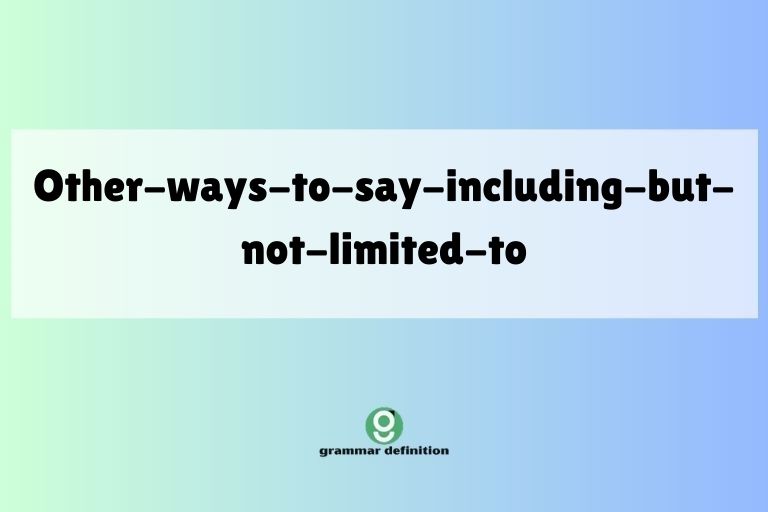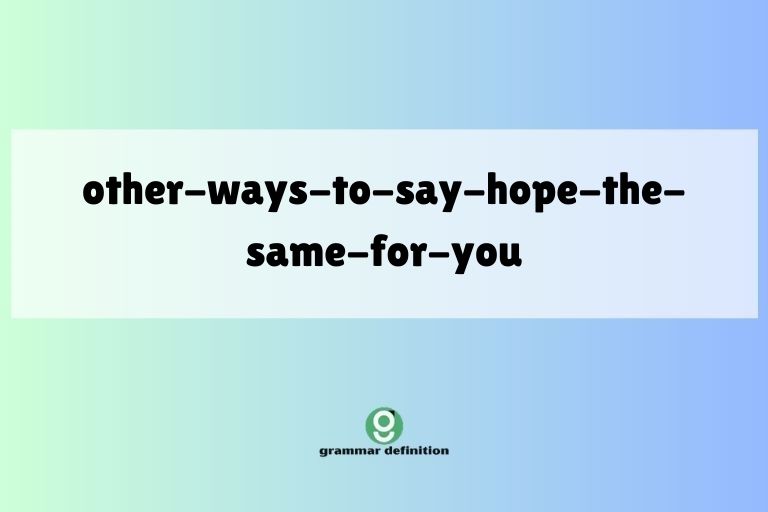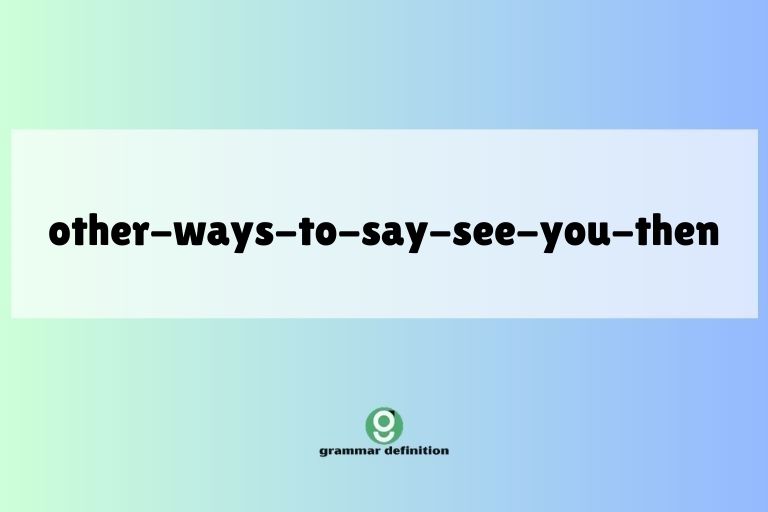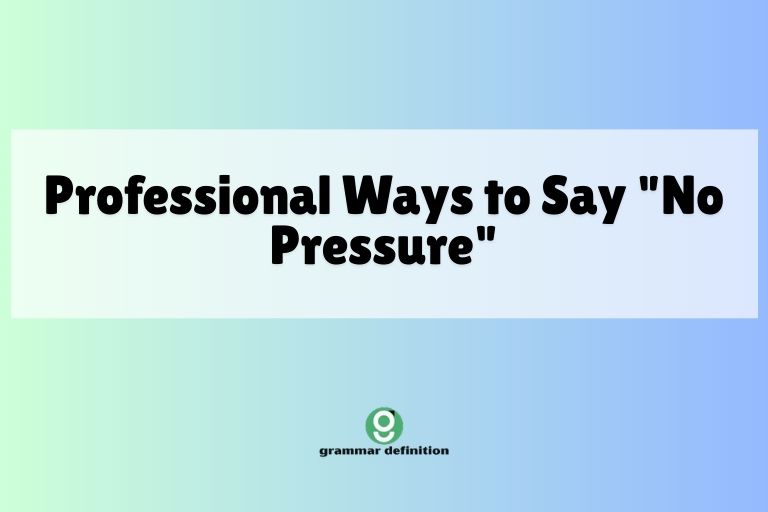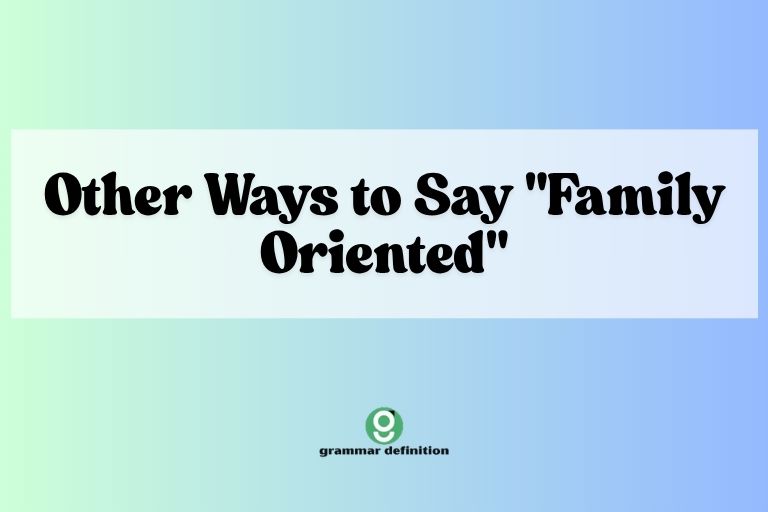Beyond “You’re Welcome”: Expanding Your English Repertoire
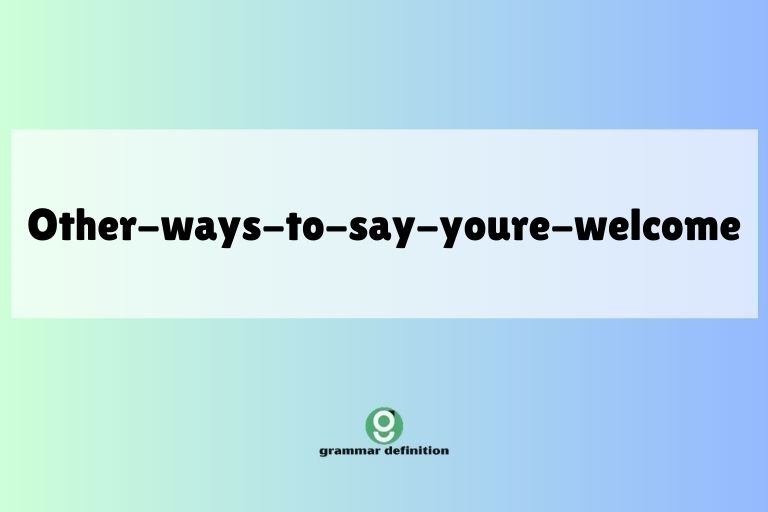
Mastering English involves more than just understanding grammar rules; it’s about expressing yourself naturally and appropriately in various situations. One of the most common phrases we learn is “You’re welcome,” a polite response to “Thank you.” However, relying solely on this phrase can make your English sound repetitive and, at times, even insincere.
This article delves into a multitude of alternative ways to respond to gratitude, enriching your vocabulary and enhancing your communication skills. Whether you’re a beginner or an advanced learner, understanding these nuances will help you navigate social interactions with greater confidence and finesse.
This comprehensive guide will explore various expressions, categorized by formality and context, providing you with the tools to choose the most suitable response in any given situation. We will examine the subtle differences in meaning and usage, offering practical examples and exercises to solidify your understanding.
By the end of this article, you’ll be equipped with a wider range of responses, allowing you to express politeness and appreciation in a more nuanced and engaging manner.
Table of Contents
- Introduction
- Defining Alternatives to “You’re Welcome”
- Structural Breakdown of Common Phrases
- Types and Categories of Responses
- Examples of Alternative Responses
- Usage Rules and Considerations
- Common Mistakes to Avoid
- Practice Exercises
- Advanced Topics: Nuances and Subtleties
- Frequently Asked Questions
- Conclusion
Defining Alternatives to “You’re Welcome”
The phrase “You’re welcome” is a standard response to an expression of gratitude, indicating politeness and acknowledging the other person’s appreciation. However, English offers a rich variety of alternative expressions that can convey similar sentiments with different shades of meaning and formality.
These alternatives can be classified based on their level of formality, the specific context in which they are used, and the subtle nuances they convey.
These alternatives serve several purposes. They can express genuine pleasure in helping someone, downplay the significance of the assistance provided, or simply add variety to your speech.
The choice of response depends heavily on the relationship between the speakers, the situation, and the desired tone. Understanding these alternatives is crucial for effective and nuanced communication in English.
The function of these phrases extends beyond mere politeness. They contribute to building rapport, establishing social connections, and conveying your personality.
By mastering these alternatives, you can demonstrate a higher level of fluency and cultural awareness, making your interactions more engaging and meaningful.
Structural Breakdown of Common Phrases
Many alternatives to “You’re welcome” follow specific structural patterns. Understanding these patterns can help you generate your own variations and adapt to different situations.
Here are some common structures:
- Simple Affirmation: This involves a simple positive statement, often downplaying the effort involved. Examples include “No problem,” “Not a problem,” and “Sure.”
- Expression of Pleasure: These phrases express genuine enjoyment in helping the other person. Examples include “My pleasure,” “It was my pleasure,” and “Glad to help.”
- Acknowledgment of Small Effort: These responses minimize the significance of the assistance provided. Examples include “Anytime,” “Don’t mention it,” and “It was nothing.”
- Offering Future Assistance: These phrases indicate a willingness to help again in the future. Examples include “Happy to help,” “Let me know if you need anything else,” and “Feel free to ask anytime.”
Each of these structures conveys a slightly different nuance. Simple affirmations are generally informal and suitable for casual interactions.
Expressions of pleasure convey sincerity and warmth. Acknowledging small effort can be used to downplay the importance of your contribution.
Offering future assistance strengthens the relationship and demonstrates ongoing support.
Consider the following examples to illustrate these structural patterns:
- Simple Affirmation: “Thank you for your help!” – “No problem!”
- Expression of Pleasure: “Thank you for driving me to the airport.” – “It was my pleasure.”
- Acknowledgment of Small Effort: “Thank you for lending me your pen.” – “Don’t mention it.”
- Offering Future Assistance: “Thank you for fixing my computer.” – “Happy to help. Let me know if you have any other issues.”
Types and Categories of Responses
Alternative responses to “Thank you” can be broadly categorized based on their level of formality and the specific context in which they are used. Understanding these categories will help you choose the most appropriate response in any given situation.
Formal Responses
Formal responses are typically used in professional settings, when addressing someone you don’t know well, or when showing a high degree of respect. These responses tend to be more elaborate and polite.
Examples of formal responses include:
- “You’re most welcome.”
- “It was my pleasure to assist you.”
- “I am happy to have been of service.”
- “It was no trouble at all.”
Informal Responses
Informal responses are suitable for casual conversations with friends, family, or colleagues you know well. These responses are often shorter and more relaxed.
Examples of informal responses include:
- “No problem.”
- “No worries.”
- “Sure.”
- “Anytime.”
- “Don’t mention it.”
Neutral Responses
Neutral responses are appropriate in a wide range of situations, striking a balance between formality and informality. These responses are generally safe to use when you are unsure of the appropriate level of formality.
Examples of neutral responses include:
- “My pleasure.”
- “Glad to help.”
- “Happy to help.”
- “You’re very welcome.”
Situational Responses
Situational responses are tailored to the specific context of the interaction. These responses often acknowledge the specific assistance provided or offer further support.
Examples of situational responses include:
- “Happy to assist you with that.” (Specific task completion)
- “Let me know if you need anything else.” (Offering further assistance)
- “I’m glad I could be of assistance.” (General helpfulness)
Examples of Alternative Responses
To further illustrate the different types of responses, let’s examine specific examples categorized by formality and context. The following tables provide a comprehensive overview of various expressions and their appropriate usage.
Formal Examples
The following table provides examples of formal responses to “Thank you,” suitable for professional settings or interactions with individuals you wish to show a high degree of respect.
Here are some examples of how the formal responses can be used:
Table 1: Formal Responses to “Thank You”
| Scenario | “Thank You” | Formal Response |
|---|---|---|
| A client thanks you for your assistance with a complex legal matter. | “Thank you for your invaluable help.” | “You’re most welcome. I was happy to assist you.” |
| A colleague thanks you for your contribution to a successful project. | “Thank you for your hard work on this project.” | “It was my pleasure to contribute to its success.” |
| A superior thanks you for completing a task efficiently. | “Thank you for handling that so efficiently.” | “I am happy to have been of service.” |
| A customer thanks you for resolving a technical issue. | “Thank you for fixing the problem so quickly.” | “It was no trouble at all. I’m glad I could help.” |
| A professor thanks you for your insightful comments during a lecture. | “Thank you for your thoughtful contribution.” | “You’re most welcome, Professor. I found the lecture very stimulating.” |
| A business partner thanks you for negotiating a favorable deal. | “Thank you for securing such a good deal.” | “It was my pleasure to negotiate on your behalf.” |
| A guest thanks you for hosting a formal dinner party. | “Thank you for a wonderful evening.” | “You’re most welcome. I’m delighted you enjoyed it.” |
| A client thanks you for providing excellent customer service. | “Thank you for your outstanding service.” | “It was my pleasure to assist you. Please don’t hesitate to contact us again.” |
| A colleague thanks you for covering their shift. | “Thank you for covering my shift yesterday.” | “It was no trouble at all. I was happy to help out.” |
| A mentor thanks you for acknowledging their guidance. | “Thank you for recognizing my contributions.” | “You’re most welcome. Your guidance has been invaluable to me.” |
| An employee thanks you for a promotion. | “Thank you for this incredible opportunity.” | “It was my pleasure to acknowledge your hard work.” |
| A student thanks you for writing a letter of recommendation. | “Thank you for writing the letter of recommendation.” | “It was my pleasure. I have high hopes for your future success.” |
| A speaker thanks you for inviting them to present at a conference. | “Thank you for inviting me to speak at the conference.” | “You’re most welcome. We were honored to have you.” |
| A beneficiary thanks you for your philanthropic donation. | “Thank you for your generous donation.” | “It was my pleasure to contribute to such a worthy cause.” |
| Someone thanks you for giving them a ride home. | “Thank you for driving me home.” | “It was no trouble at all. I’m glad I could help.” |
| A neighbor thanks you for watching their house while they were away. | “Thank you for keeping an eye on the house.” | “It was my pleasure. I hope you had a relaxing vacation.” |
| Someone thanks you for proofreading their important document. | “Thank you for proofreading my document.” | “You’re most welcome. I hope it is error-free now.” |
| Someone thanks you for translating a document. | “Thank you for translating this document for me.” | “It was my pleasure to assist you with that.” |
| A patient thanks a doctor for a successful surgery. | “Thank you for the successful surgery.” | “I’m happy to have been of service.” |
| A client thanks a lawyer for winning their case. | “Thank you for winning my case.” | “You’re most welcome. I was happy to fight for you.” |
Informal Examples
The following table provides examples of informal responses to “Thank you,” suitable for casual conversations with friends, family, or close colleagues. These responses are often shorter and more relaxed, reflecting a comfortable and familiar relationship.
Here are some examples of how the informal responses can be used:
Table 2: Informal Responses to “Thank You”
| Scenario | “Thank You” | Informal Response |
|---|---|---|
| A friend thanks you for lending them money. | “Thanks for the loan!” | “No problem!” |
| A family member thanks you for helping with chores. | “Thanks for doing the dishes!” | “No worries.” |
| A colleague thanks you for covering for them. | “Thanks for covering me earlier.” | “Sure!” |
| A roommate thanks you for picking up groceries. | “Thanks for grabbing the milk!” | “Anytime.” |
| A friend thanks you for giving them a ride. | “Thanks for the ride!” | “Don’t mention it.” |
| A friend thanks you for always being there to listen. | “Thanks for listening, as always.” | “No problem, dude.” |
| A family member thanks you for a gift. | “Thanks for the awesome present!” | “No worries, I knew you’d love it.” |
| A colleague thanks you for helping them fix their computer. | “Thanks for fixing my computer!” | “Sure, glad I could help.” |
| A roommate thanks you for cleaning the apartment. | “Thanks for cleaning up!” | “Anytime, it needed it.” |
| A friend thanks you for picking them up from the airport. | “Thanks for picking me up!” | “Don’t mention it, glad you’re back.” |
| A friend thanks you for proofreading their essay. | “Thanks for proofreading my essay!” | “No problem, hope it helps.” |
| A family member thanks you for cooking dinner. | “Thanks for making dinner!” | “No worries, I enjoy cooking.” |
| A colleague thanks you for helping them with a difficult task. | “Thanks for helping me with that task!” | “Sure, happy to lend a hand.” |
| A roommate thanks you for paying the bills. | “Thanks for paying the bills!” | “Anytime, just Venmo me your share.” |
| A friend thanks you for recommending a good movie. | “Thanks for recommending that movie!” | “Don’t mention it, I knew you’d like it.” |
| A friend thanks you for remembering their birthday. | “Thanks for remembering my birthday!” | “No problem, wouldn’t miss it.” |
| A sibling thanks you for covering for them with your parents. | “Thanks for covering for me with mom and dad!” | “No worries, just don’t do it again.” |
| A friend thanks you for letting them crash at your place. | “Thanks for letting me crash at your place!” | “Anytime, make yourself at home.” |
| A friend thanks you for bringing them soup when they were sick. | “Thanks for bringing me soup when I was sick!” | “Don’t mention it, get well soon.” |
| A friend thanks you for helping them move. | “Thanks for helping me move!” | “No problem, that’s what friends are for.” |
Neutral Examples
The following table provides examples of neutral responses to “Thank you,” which are appropriate in a wide range of situations. These responses strike a balance between formality and informality, making them suitable when you are unsure of the appropriate level of formality or when you want to maintain a professional yet friendly demeanor.
Here are some examples of how the neutral responses can be used:
Table 3: Neutral Responses to “Thank You”
| Scenario | “Thank You” | Neutral Response |
|---|---|---|
| A colleague thanks you for your assistance on a project. | “Thank you for your help with the presentation.” | “My pleasure.” |
| A customer thanks you for resolving their issue. | “Thank you for fixing the problem.” | “Glad to help.” |
| A neighbor thanks you for watering their plants. | “Thank you for watering my plants while I was away.” | “Happy to help.” |
| A coworker thanks you for sharing your notes. | “Thank you for sharing your notes from the meeting.” | “You’re very welcome.” |
| A client thanks you for your prompt response. | “Thank you for getting back to me so quickly.” | “My pleasure, I’m here to assist.” |
| A student thanks you for explaining a difficult concept. | “Thank you for explaining that concept to me.” | “Glad to help, it’s my job.” |
| A customer thanks you for your patience. | “Thank you for being so patient with me.” | “Happy to help, customer satisfaction is our priority.” |
| A visitor thanks you for directions. | “Thank you for the directions.” | “You’re very welcome, have a great day.” |
| A guest thanks you for a lovely meal. | “Thank you for the lovely dinner.” | “My pleasure, hope you enjoyed it.” |
| A colleague thanks you for your feedback on their report. | “Thank you for your feedback on my report.” | “Glad to help, teamwork makes the work easier.” |
| A customer thanks you for your excellent service. | “Thank you for your excellent service.” | “Happy to help, it’s our commitment.” |
| A neighbor thanks you for helping them carry groceries. | “Thank you for helping me carry my groceries.” | “You’re very welcome, no problem at all.” |
| A coworker thanks you for covering their phone calls. | “Thank you for covering my phone calls while I was away.” | “My pleasure, that’s what we do as a team.” |
| A client thanks you for your professional advice. | “Thank you for your professional advice.” | “Glad to help, I’m always available.” |
| A student thanks you for your inspiring lecture. | “Thank you for the inspiring lecture.” | “Happy to help, I’m passionate about the subject.” |
| A stranger thanks you for holding the door open for them. | “Thank you for holding the door open for me.” | “You’re very welcome, have a nice day.” |
| A colleague thanks you for helping them prepare for a presentation. | “Thank you for helping me prepare for my presentation.” | “My pleasure, I’m sure you’ll do great.” |
| A customer thanks you for processing their refund quickly. | “Thank you for processing my refund so quickly.” | “Glad to help, we always aim for customer satisfaction.” |
| A friend thanks you for introducing them to a new hobby. | “Thank you for introducing me to that new hobby!” | “Happy to help, it’s fun to share passions.” |
Situational Examples
The following table provides examples of situational responses to “Thank you,” which are tailored to the specific context of the interaction. These responses often acknowledge the specific assistance provided or offer further support, demonstrating attentiveness and a willingness to go the extra mile.
Here are some examples of how the situational responses can be used:
Table 4: Situational Responses to “Thank You”
| Scenario | “Thank You” | Situational Response |
|---|---|---|
| A colleague thanks you for editing their report. | “Thank you for editing my report.” | “Happy to assist you with that. Let me know if you need further revisions.” |
| A customer thanks you for resolving a complex issue. | “Thank you for resolving that complicated issue.” | “I’m glad I could be of assistance. Is there anything else I can help you with?” |
| A student thanks you for explaining a difficult concept in detail. | “Thank you for explaining that in so much detail.” | “Glad I could clarify that for you. Feel free to ask if you have any more questions.” |
| A neighbor thanks you for watching their pet. | “Thank you for watching my dog while I was away.” | “Happy to help. He’s a great dog. Let me know if you need me to watch him again sometime.” |
| A client thanks you for delivering a project ahead of schedule. | “Thank you for delivering the project so quickly.” | “Happy to have met the deadline. We pride ourselves on efficiency.” |
| A friend thanks you for listening to their problems. | “Thank you for listening to me vent.” | “Anytime, I’m always here for you. Let’s grab coffee soon.” |
| A family member thanks you for helping them move. | “Thank you for helping me move all those boxes.” | “Happy to help you settle into your new home. Let’s celebrate with pizza.” |
| A coworker thanks you for covering their shift. | “Thank you for covering my shift.” | “Glad I could help out. Just return the favor when you can.” |
| A customer thanks you for providing a discount. | “Thank you for giving me a discount!” | “Happy to offer it to you. We appreciate your business.” |
| A student thanks you for writing them a letter of recommendation. | “Thank you for writing me that letter of recommendation.” | “Happy to do it. I believe in your potential.” |
| A friend thanks you for introducing them to their future spouse. | “Thank you for introducing me to my future wife!” | “Glad I could play matchmaker. I expect an invitation to the wedding!” |
| A colleague thanks you for mentoring them. | “Thank you for mentoring me over the past few months.” | “Happy to share my knowledge. I’m proud of your progress.” |
| A customer thanks you for fixing their car. | “Thank you for fixing my car!” | “Glad to have your car running smoothly. Feel free to reach out if you have any further issues.” |
| A stranger thanks you for finding their lost wallet. | “Thank you for finding my wallet!” | “Happy to return it to you. Honesty is always the best policy.” |
| A guest thanks you for hosting a party. | “Thank you for hosting such a fun party!” | “Glad you enjoyed it! I wanted everyone to have a great time.” |
| A family member thanks you for taking care of them when they were sick. | “Thank you for taking care of me when I was sick.” | “Happy to help you get back on your feet. Rest up and take care.” |
| A coworker thanks you for helping them meet a deadline. | “Thank you for helping me meet that deadline!” | “Glad we could get it done together. Teamwork makes the dream work.” |
| A friend thanks you for being there for them during a difficult time. | “Thank you for being there for me during this tough time.” | “Happy to be there for you. I’m here to support you in any way I can.” |
| A neighbor thanks you for shoveling their driveway. | “Thank you for shoveling my driveway!” | “Happy to help out. We have to look out for each other in this neighborhood.” |
Usage Rules and Considerations
While the alternatives to “You’re welcome” offer flexibility and nuance, it’s important to adhere to certain usage rules and considerations. These guidelines will help you choose the most appropriate response in different situations, ensuring that your communication is both polite and effective.
- Formality: Always consider the level of formality required by the situation. Use formal responses in professional settings or when addressing someone you don’t know well. Opt for informal responses in casual conversations with friends and family.
- Context: Tailor your response to the specific context of the interaction. Acknowledge the specific assistance provided or offer further support when appropriate.
- Relationship: The relationship between the speakers plays a crucial role in determining the appropriate response. Use more relaxed and informal responses with people you know well.
- Tone: Pay attention to the tone of your response. Convey sincerity and warmth when expressing pleasure in helping someone. Downplay the significance of your contribution when appropriate.
- Cultural Sensitivity: Be aware of cultural differences in the expression of gratitude and politeness. Some cultures may have different expectations regarding appropriate responses.
It’s also important to note that overuse of any particular phrase can make your speech sound repetitive. Varying your responses will make your communication more engaging and natural.
For example, avoid using “No problem” repeatedly in a formal setting. Instead, alternate between “You’re most welcome,” “It was my pleasure to assist you,” and “It was no trouble at all.”
Common Mistakes to Avoid
Learners often make common mistakes when using alternatives to “You’re welcome.” Being aware of these errors will help you avoid miscommunication and improve your fluency.
- Using “You are welcome” instead of “You’re welcome”: The contracted form “You’re welcome” is the standard and more natural expression.
- Overusing “No problem” in formal settings: While “No problem” is acceptable in informal conversations, it can sound dismissive in professional situations.
- Using “Welcome” as a standalone response: “Welcome” is typically used to greet someone upon arrival, not as a response to “Thank you.”
- Misunderstanding the meaning of “Don’t mention it”: This phrase is used to downplay the significance of your contribution, not to discourage the person from thanking you.
- Using inappropriate slang or colloquialisms in formal settings: Avoid using slang or informal expressions in professional situations.
Here are some examples of correct and incorrect usage:
Table 5: Correct vs. Incorrect Usage
| Incorrect | Correct |
|---|---|
| “Thank you for your help!” – “You are welcome!” | “Thank you for your help!” – “You’re welcome!” |
| “Thank you for your help with the report.” – “No problem!” (in a formal setting) | “Thank you for your help with the report.” – “It was my pleasure to assist you.” (in a formal setting) |
| “Thank you for coming.” – “Welcome!” (as a response to thanks) | “Thank you for coming.” – “I’m glad you could make it!” (a more appropriate response) |
| “Thank you for lending me your car.” – “Don’t mention it!” (said dismissively) | “Thank you for lending me your car.” – “Don’t mention it. I’m happy to help out.” (said sincerely) |
| “Thank you for your assistance with the project.” – “Cool beans!” (in a formal setting) | “Thank you for your assistance with the project.” – “It was my pleasure to contribute.” (in a formal setting) |
Practice Exercises
To solidify your understanding of the alternatives to “You’re welcome,” complete the following practice exercises. These exercises will help you apply the concepts learned in this article and improve your ability to choose the most appropriate response in different situations.
Exercise 1: Choose the Best Response
Select the best response to the “Thank you” statement in each scenario.
Table 6: Practice Exercise 1
| Scenario | “Thank You” | Possible Responses | Correct Answer |
|---|---|---|---|
| A colleague thanks you for helping them with a presentation. | “Thank you for your help with the presentation.” | A) No problem. B) It was my pleasure. C) Sure. | B) It was my pleasure. |
| A friend thanks you for giving them a ride home. | “Thanks for the ride!” | A) Anytime. B) You’re most welcome. C) I am happy to have been of service. | A) Anytime. |
| A customer thanks you for resolving their issue. | “Thank you for fixing the problem.” | A) Glad to help. B) Don’t mention it. C) No worries. | A) Glad to help. |
| A neighbor thanks you for watering their plants. | “Thank you for watering my plants while I was away.” | A) Happy to help. B) You’re very welcome. C) It was nothing. | A) Happy to help. |
| A client thanks you for your prompt response. | “Thank you for getting back to me so quickly.” | A) My pleasure. B) Sure. C) No problem. | A) My pleasure. |
| A student thanks you for explaining a difficult concept. | “Thank you for explaining that difficult concept.” | A) Anytime B) Glad to help C) You’re welcome | B) Glad to help |
| A family member thanks you for cooking dinner. | “Thank you for cooking dinner.” | A) No worries B) It was my pleasure C) Happy to help | A) No worries |
| A colleague thanks you for covering their shift. | “Thank you for covering my shift.” | A) No problem B) My pleasure C) You’re welcome | A) No problem |
| A boss thanks you for a job well done. | “Thank you for a job well done.” | A) You’re welcome B) It was my pleasure C) Happy to help | B) It was my pleasure |
| A friend thanks you for listening to their problems. | “Thank you for listening to me.” | A) Anytime B) It was nothing C) No worries | A) Anytime |
Exercise 2: Fill in the Blanks
Complete the following dialogues with an appropriate response to “Thank you.”
Table 7: Practice Exercise 2
| Dialogue | Your Response |
|---|---|
| Person A: “Thank you for your help with the project.” Person B: “__________________________” (Formal) |
It was my pleasure to assist you. |
| Person A: “Thanks for the ride!” Person B: “__________________________” (Informal) |
Anytime. |
| Person A: “Thank you for fixing my computer.” Person B: “__________________________” (Neutral) |
Glad to help. |
| Person A: “Thank you for watching my dog.” Person B: “__________________________” (Situational) |
Happy to help. Let me know if you need
me to watch him again. |
| Person A: “Thank you for lending me your notes.” Person B: “__________________________” (Informal) |
No problem. |
| Person A: “Thank you for your excellent service.” Person B: “__________________________” (Neutral) |
You’re very welcome. |
| Person A: “Thank you for helping me move.” Person B: “__________________________” (Situational) |
Happy to help you get settled in. |
| Person A: “Thank you for your guidance.” Person B: “__________________________” (Formal) |
You’re most welcome. I’m glad I could assist you. |
| Person A: “Thank you for listening to me.” Person B: “__________________________” (Informal) |
Don’t mention it. |
| Person A: “Thank you for your patience.” Person B: “__________________________” (Neutral) |
My pleasure. |
Advanced Topics: Nuances and Subtleties
Beyond the basic alternatives, there are more nuanced and subtle ways to respond to “Thank you” that can add depth and personality to your communication. These advanced techniques involve understanding the underlying emotions and intentions behind the expression of gratitude and tailoring your response accordingly.
- Reflecting Gratitude: Instead of simply acknowledging the thanks, you can reflect the gratitude back to the person, emphasizing their positive qualities or actions. For example, “Thank you for your hard work!” – “The pleasure was all mine. Your dedication made it easy.”
- Humor and Lightheartedness: In appropriate situations, you can use humor or lightheartedness to respond to “Thank you,” creating a more relaxed and engaging atmosphere. For example, “Thank you for helping me with that task!” – “Anytime! Just promise you won’t ask me to do that again… just kidding!”
- Personal Anecdotes: Sharing a brief personal anecdote can add a personal touch to your response, making it more memorable and meaningful. For example, “Thank you for your support during this difficult time.” – “It was the least I could do. I remember when you helped me through a similar situation…”
- Expressing Mutual Appreciation: Acknowledge the mutual benefit or positive impact of the interaction, emphasizing the shared experience. For example, “Thank you for your collaboration on this project.” – “Thank you as well! It was a pleasure working with you, and I learned a lot from your expertise.”
Mastering these advanced techniques requires a high level of emotional intelligence and cultural awareness. Pay close attention to the nonverbal cues and contextual factors to ensure that your response is appropriate and well-received.
Frequently Asked Questions
Is it ever inappropriate to say “You’re welcome”?
While generally polite, “You’re welcome” can sometimes sound insincere if overused or delivered with a dismissive tone. In very formal situations, alternatives like “It was my pleasure” might be more suitable.
What’s the difference between “No problem” and “Not a problem”?
Both phrases are informal ways to respond to “Thank you,” indicating that the assistance provided was easy or insignificant. “No problem” is slightly more common, but both are generally interchangeable.
Can I use “Welcome” as a response to “Thank you”?
While “Welcome” is often used to greet someone, it is not typically used as a standalone response to “Thank you.” It’s more appropriate to say “You’re welcome” or another alternative.
How do I choose the right response in a multicultural setting?
Research the cultural norms and expectations of the specific culture you are interacting with. Some cultures may have different expressions of gratitude and politeness.
When in doubt, err on the side of formality and politeness.
Is it okay to say nothing at all after someone says “Thank you”?
While silence isn’t inherently rude, it can come across as dismissive or uninterested. It’s generally better to acknowledge the “Thank you” with a verbal response or a nod of acknowledgment.
What if I genuinely didn’t mind helping someone?
Then expressions such as “No problem”, “Anytime”, “It was nothing” or “My pleasure” would be perfect.
What if I went out of my way to help someone?
Acknowledging the extra effort is a good idea. You could use phrases like: “I’m glad I could be of assistance,” or “I’m happy I could help in this situation.”
What if I want to offer continued support?
Phrases like “Let me know if you need anything else” or “Feel free to ask anytime” are useful for demonstrating further assistance.
Conclusion
Mastering the art of responding to gratitude is an essential aspect of effective communication in English. By expanding your repertoire beyond the standard “You’re welcome,” you can express politeness, sincerity, and cultural awareness in a more nuanced and engaging manner.
Whether you’re navigating formal professional settings or casual conversations with friends, the alternative responses discussed in this article will empower you to communicate with greater confidence and finesse.
Remember to consider the level of formality, the context of the interaction, and the relationship between the speakers when choosing your response. Pay attention to the subtle nuances and emotional undertones to ensure that your communication is both appropriate and well-received.
By practicing the exercises and applying the guidelines outlined in this article, you can elevate your English skills and enhance your ability to connect with others on a deeper level.

